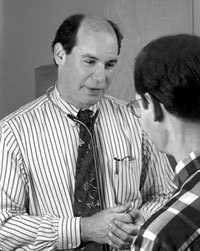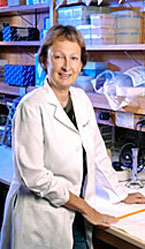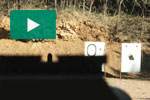Virus Visionaries
 |
Michael Saag (above) and an army of UAB investigators have traced the source of HIV, helped develop revolutionary treatments, and brought hope to patients from Alabama to the African nation of Zambia. |
From the earliest days of the global AIDS epidemic in the 1980s, UAB researchers and clinicians have been fighting on the front lines at home and abroad. The UAB Center for AIDS Research (CFAR) was one of the original seven AIDS centers established by the federal government in 1988. For two decades, CFAR’s 1917 Adult Outpatient Clinic has been offering cutting-edge treatments—many of them developed at UAB—to patients from across the country. UAB scientists have made significant progress in decoding the genetic profile of the human immunodeficiency virus (HIV) and in testing new therapies, vaccines, and prevention strategies.
In 1999, UAB’s Beatrice Hahn, M.D., and George Shaw, M.D., Ph.D., reported that they had traced the origins of HIV by finding a close association to simian immunodeficiency virus (SIVcpz) in specific communities of African chimpanzees. The final “origins” proof would come in 2006, again at UAB, when Hahn and colleagues identified chimp communities in west central Africa as the natural reservoir of HIV-1. This discovery broadened the world’s understanding of human epidemics.
As the new millennium dawned, UAB scientists were at the forefront of plans to bring lifesaving antiviral drugs to AIDS-ravaged Africa. In 2000, UAB doctors and health officials in the nation of Zambia launched the Center for Infectious Disease Research in Zambia. The organization has provided antiviral drugs to thousands of patients; thousands more have received preventive care. The Zambia center is considered a premier treatment and research model in pediatrics, public health, obstetrics, and AIDS.
Back in Birmingham, CFAR is working with other national research centers to streamline the sharing of electronic health records. This will allow scientists to conduct unprecedented analyses of HIV care trends, antiviral therapy successes, and other clinic observations.
 |
Five for the FightUAB researchers were the first to: • Test a phase III (final stage) trial of an AIDS vaccine. • Show that the AIDS virus replicates early and aggressively soon after a person is infected with HIV, a discovery that changed the way clinicians treat HIV infection. • Demonstrate the value of viral load testing in clinical practice. With this test, physicians can track response to antiretroviral treatment, much as blood-sugar response to insulin is used to treat diabetes. • Report that alterations in the AIDS virus can lead to clinical failure of antiviral medication. |
||||
In 2006, Beatrice Hahn and colleagues identified chimp communities in west-central Africa as the natural reservoir of HIV-1. |
|||||



